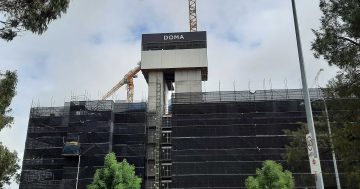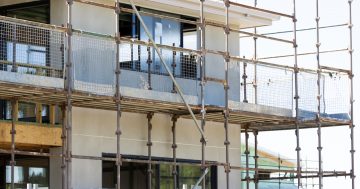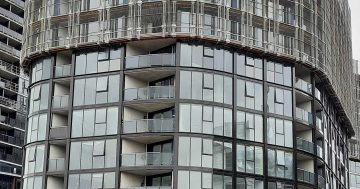
The new standards will make it easier for people with mobility issues but will come at a cost. Photo: File.
Minimum accessibility standards in Canberra’s new homes will mean higher building costs that will have to be passed on to the consumer, industry has warned. They’re calling for a lengthy transition to the new rules.
The building industry response comes after Friday’s Building Minister’s meeting agreed to include minimum accessibility provisions for residential housing and apartments in the National Construction Code (NCC) next year, based on the Livable Housing Design Guidelines (LHDG) silver standards.
She said the ACT would adopt all seven of the standards that would become part of the NCC in 2022. The government would consult with industry stakeholders and others locally about a transition timeframe.
“Modest but significant changes will mean housing built in the future will better meet needs. This is important not only for people with disabilities, mobility issues, or who are ageing. This reform is for all of us,” she said.
But Master Builders ACT CEO Michael Hopkins said the decision would significantly impact the design and cost of new homes.
“It really comes down to balancing the need to provide housing to suit accessible housing requirements and the cost to meet the design and construction standards. That’s why it’s important the Minister consults closely with industry to make sure we get that balance right,” he said.

Rebecca Vassarotti said the voluntary approach to accessible housing had failed. Photo: Dominic Giannini.
Ms Vassarotti said estimates suggest construction costs would rise by less than 1 per cent, but these are likely to reduce over time as the industry adjusts to the changes.
She said there was a dire shortage of accessible housing, including rental properties, and it was much cheaper to introduce these features during the build rather than retrofitting later.
“When people talk about building their dream home, we want to make sure that 30, 40, 50 years into the future, as they age or encounter a mobility issue, their house can remain their dream home,” Ms Vassarotti said.
Mr Hopkins said the MBA would have preferred the focus to have been on increasing the voluntary uptake of the guidelines, better funding of Liveable Housing Australia, and more training of industry members.
Ms Vassarotti argued that a voluntary approach had failed, but Mr Hopkins said properties had been built in the ACT according to the guidelines and the MBA had even conducted training sessions for its members, something it will again have to roll out so builders were across the new rules.
He said it was unfortunate that there was not an easily found list of locally built properties that potential buyers could access.
At least the Ministers had tackled the issue in a nationally consistent way meaning there was one set of guidelines, he said, something the government also supported.
“The MBA hopes that the ACT Government will consult in detail with the building industry on how the standards will be implemented in the ACT,” Mr Hopkins said. “This will require a lengthy transition plan and extensive exemption criteria.”
Mr Hopkins said there would be challenges to incorporate the new rules, particularly on steep slopes where a level path without steps from the street or car park will be difficult to construct.
He said the changes could be implemented together with the review of the ACT planning system to facilitate more housing in established suburbs.
“If planning rules are modified to allow redevelopment of existing housing stock in established areas, new low-rise, higher density housing could incorporate accessibility standards and provide a viable housing option for elderly Canberrans to age-in-place,” he said.





















